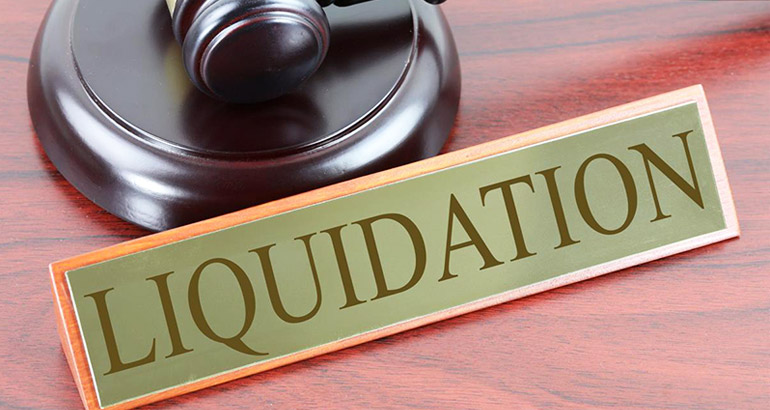The Only Guide for Company Liquidation
Some Known Factual Statements About Company Liquidation
Table of ContentsHow Company Liquidation can Save You Time, Stress, and Money.The Only Guide to Company LiquidationThe Greatest Guide To Company LiquidationThe Ultimate Guide To Company LiquidationGetting My Company Liquidation To Work
A liquidator is specifically designated to supervise the winding up of a company's events in order for it to be folded commonly when the firm is declaring bankruptcy. The liquidator is an impartial 3rd celebration that supervises the sale of business assets in order to settle any type of arrearages.Their role consists of, yet is not limited to: Impartial Movie director: A liquidator is entrusted with functioning as an impartial 3rd party to supervise the entire company liquidation procedure. Produce Statement of Affairs: Liquidators have to develop a thorough declaration of affairs document. This document is dispersed to financial institutions, outlining the current financial standing of the organization at the time of its liquidation.
After the liquidation of a business, its existence is erased from Firms Home and it ceases to be a legal entity. If supervisors navigated the procedure uncreative, there would be no fines or individual liability for strong debts anticipated. Now, with a fresh start, directors can discover new organization possibilities, though professional examination is suggested.
The Company Liquidation PDFs
If even more than 90% of all company shareholders concur, liquidation can take area on brief notice within seven days, the minimal legal notice for creditors. Normally, the bigger the liquidation and the even more properties and capital the company has, the longer the process will take. 'Do I need to pay to liquidate my business?', the solution will certainly rely on whether or not your business has any assets leftover when liquidating.

We comprehend that no two business are the same, which is why we will make the effort to learn more about your organization so we can recommend the finest program of action for you. We only operate in your benefits, so you can be totally confident in the solution we give.
The Ultimate Guide To Company Liquidation
In the UK, there is an established process to shutting down or restructuring a minimal business, whether it is solvent or bankrupt. Source This procedure is called liquidation and can just be handled by an accredited insolvency professional (IP) according to the Bankruptcy Act 1986. There are four primary kinds of firm liquidation process: Creditors' Volunteer Liquidation (CVL); Mandatory liquidation; Management; and Members' Volunteer Liquidation (MVL).

In these situations, it is essential that the firm ceases trading; if business proceeds to trade, the directors can be held personally accountable and it might cause the insolvency specialist reporting wrongful trading, referred to important source as misfeasance, which might lead to lawsuit. The directors assign an insolvency practitioner and when this has actually been agreed and validated, there is a conference with the investors.
Naturally, if there are no shareholders, this action of the procedure is not required (Company Liquidation). The IP takes control of the business and begins the firm liquidation process. The directors are no more included in what takes place, including the sale of the business's possessions. If the supervisors desire any of the properties, they can alert the IP.
Getting My Company Liquidation To Work
The primary difference is that the company's creditors used to the court for an ending up order which requires the financially troubled business into a liquidation process. In many cases, lenders take this action as a last resource due to the fact that they have not gotten repayment through various other types of negotiation. The court designates a bankruptcy practitioner, additionally called an official receiver, to perform the compulsory firm liquidation process.
This sort of business liquidation is not volunteer and supervisors' conduct is reported to the UK's Assistant of State once the liquidation process has actually been completed. Any supervisor that stops working to comply with the IP or has actually been included in supervisor misconduct, or an illegal act, may result in major repercussions.
It is utilized as a means to safeguard the firm from any legal activity by its lenders. The supervisors of the company agree to make regular settlements to settle their financial obligations over a period of time. The selected manager handles the voluntary management procedure, and receives the settlements which they after that distribute to lenders according to the concurred quantities.
The 5-Minute Rule for Company Liquidation
This provides the business with time to develop a strategy moving forward to save the firm and stay clear of liquidation. However, at this moment, directors hand control of the firm over to the assigned manager. If a business is solvent yet the directors and investors intend to close the company, a Members Volunteer Liquidation is the right choice.
The Clicking Here company liquidation process is managed by a liquidator assigned by the supervisors and shareholders of the company and they have to authorize a statement that there are no lenders remaining. The liquidation procedure for an MVL resembles that of a CVL because possessions are understood yet the profits are dispersed to the directors and the investors of the business after the liquidator's fees have been paid.